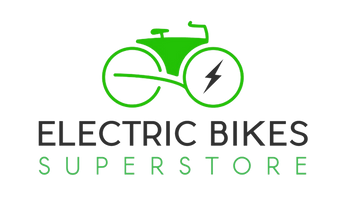The difference between hub motors and mid-drives
While eBikes are a fun way to get around; however it can be confusing when comparing them. In Australia the maximum motor size is 250W and the maximum power-assisted speed is 25km/h. Beyond that speed, power assistance cuts out. The motor will engage when the bike is switched on the power level is selected and pedalling begins. Once pedalling ceases, the motor will disengage.
There are two types of sensors that are commonly used on eBikes – Cadence and Torque.
Cadence Sensor: refers to pedal movement – regardless of the speed – as long as the pedals keep moving, the bike will power you along. It feels like someone has their hand on your back and is pushing you along. This is the easiest pedalling experience.
Torque Sensor: refers to how much pressure is put on the pedals. If you pedal hard, you will increase your speed. If you pedal softer, you will go slower and imitates bike-riding without a motor. Torque sensors feels the most natural but amplifies what you put in. This system is great when you need maximum control on a mountain bike track.
There are 3 main motor types - front hub, rear hub and mid-drive motors. Below are the positive and negatives of each motor type.
Front Hub
| The first ebikes began with a front hub motor and it’s the cheapest and easiest to make. A front hub motor has the motor positioned in the front wheel of the bike. The majority of front hub motors operate off a cadence sensor. The motor powers the front wheel while you power the rear wheel. When riding, it feels like the bike is being pulled along. | 
|
Positives:
- Cost effective
- Some people like the fact the front and rear wheel are powered at the same time through your pedalling of the rear wheel and the motor powering the front wheel
- Lower maintenance
- As the motor works independently you could still get home if the chain breaks.
Negatives:
- With a cadence sensor, the front wheel can slip on loose gravel and wet roads and create torque steer
- The front-wheel does not have a quick release and needs to be undone with a spanner. This can take slightly longer
- Because of the cadence sensor, it can give you a feeling of less control
- Not as effective on steep hills as the motor doesn’t get to use any of the gears at the back of the bike.
Rear Hub
| Ebikes evolved into rear hub motors as the technology improved. It is still cheap to make and just as mechanically sound. A rear hub motor has the motor position in the rear wheel of the bike. The majority of rear hub motors operate off a cadence sensor; the motor powers the rear wheel at the same time as you do. The motor is not linked to the chain and gear so sometimes the motor can be powering faster than you are pedalling, which is why there is the feeling of being pushed along. | 
|
Positives:
- Cost effective
- Safer than a front hub motor as there is no torque steer with the motor in the back
- Low maintenance as the only energy going through the chain and gears is done by the rider
- As the motor works independently you could still get home if the chain breaks.
Negatives:
- The rear wheel does not have a quick release and needs to be undone with a spanner. This can take longer
- Because of the cadence sensor, it can give you a feeling of less control
- Not as effective on steep hills as the motor doesn’t get to use any of the gears at the back of the bike.
Mid-Drive
| Mid-drive eBikes are the most expensive to make and buy. The motor is positioned at the crank in the middle, and moves all the energy through the chain at the same time you are pedalling energy into the chain. Most mid-drive eBikes have torque sensors, however a mid-drive kit to put on a normal bike usually use cadence sensors. A typical mid-drive bike will make you feel like superman as it enhances the effort that you put in. | 
|
Positives:
- The best eBike motor for hilly areas – the energy goes through the chain when gears are changed and the motor is receives the benefit of the gears.
- More balanced weight distribution
- Can give you more control for mountain biking due to the cadence sensor.
- A safer driving system due to the power to the rear wheel.
- All wheels can be quick release making it easier when changing a flat tyre.
Negatives:
- There can be more wear and tear on the chain and cassette because the motor is putting all the energy through them. Cheaper chains will snap easier.
- Mid-drives bikes are usually more expensive to purchase as they cost more to manufacture.



